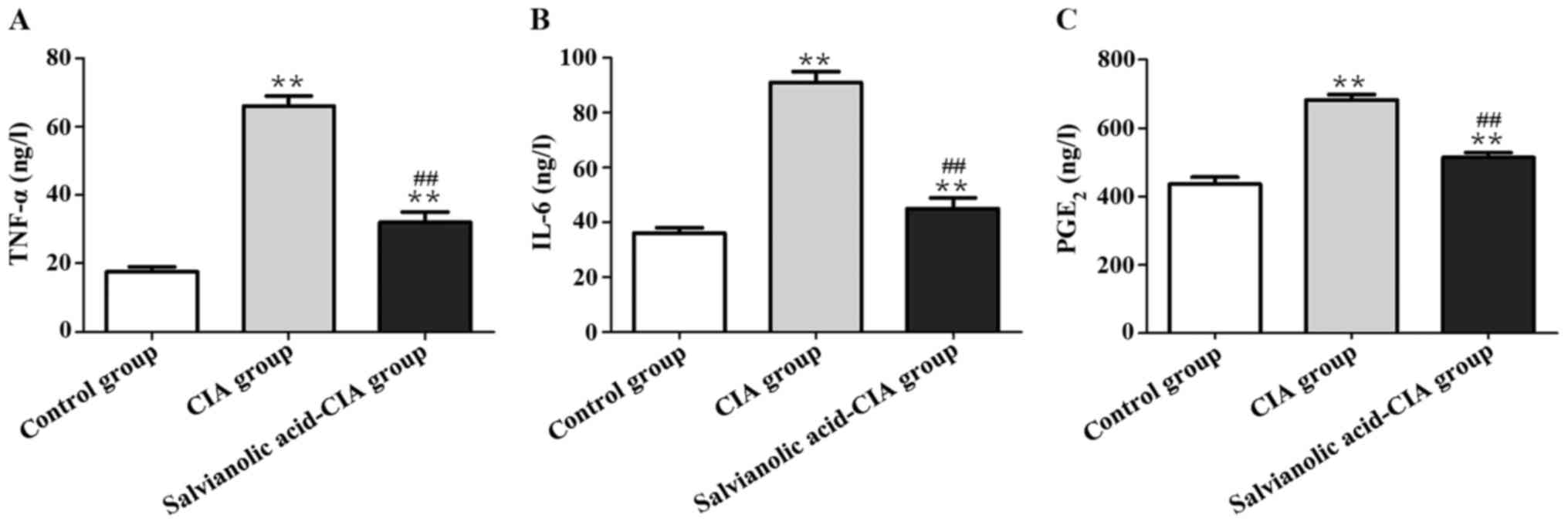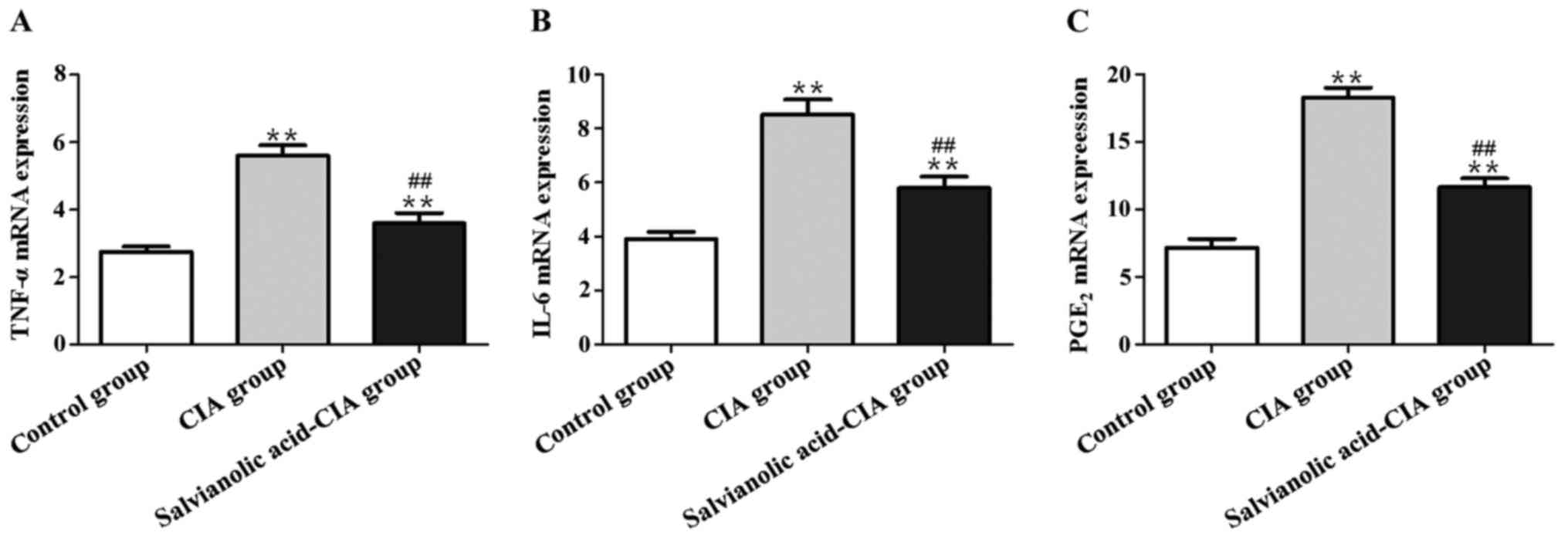Inhibitory effect of salvianolic acid on inflammatory mediators of rats with collagen-induced rheumatoid arthritis
- Authors:
- Published online on: September 5, 2018 https://doi.org/10.3892/etm.2018.6696
- Pages: 4037-4041
-
Copyright: © Sun et al. This is an open access article distributed under the terms of Creative Commons Attribution License.
Metrics: Total
Views: 0 (Spandidos Publications: | PMC Statistics: )
Total PDF Downloads: 0 (Spandidos Publications: | PMC Statistics: )
Abstract
The aim of this study was to investigate the inhibitory effect of salvianolic acid on inflammatory mediators of rats with collagen-induced rheumatoid arthritis (RA). Thirty rats were randomly divided into the normal control group, collagen-induced arthritis model group (CIA model group) and drug group (Salvianolic Acid-CIA group). In the model group, the CIA models were established through intradermal injection of collagen emulsion at the toes. At 3 weeks after the model establishment, grouped drug administration was conducted, of which salvianolic acid was given by gavage to Salvianolic Acid-CIA group. The degrees of joint swelling of each group of rats were recorded. Enzyme-linked immunosorbent assay (ELISA) was applied to detect the levels of relevant inflammatory mediators, reverse transcription‑quantitative polymerase chain reaction (RT-qPCR) was used to measure the messenger RNA (mRNA) expression levels of serum necrosis factor-alpha (TNF-α), interleukin-6 (IL-6) and prostaglandin E2 (PGE2), and hematoxylin and eosin staining was utilized to detect the pathological characteristics of the synovial tissues. After the establishment of models, the ankle joint swelling degree of rats in the model group was more obvious compared with that in the normal control group (P<0.01). After 3 weeks of drug administration, the ankle joint swelling degree of rats in the Salvianolic Acid-CIA group was alleviated compared with that in the model group (P<0.05). The contents of TNF‑α, IL-6 and PGE2 in Salvianolic Acid-CIA group were obviously lower than those in the model group (P<0.01). The mRNA expression levels of TNF-α, IL-6 and PGE2 in the Salvianolic Acid-CIA group were markedly lower than those in the model group. The hyperemia of rat synovial tissues in Salvianolic Acid-CIA group was obviously relieved compared with that in the CIA model group. In conclusion, the models of CIA rats are successfully established, and the results show salvianolic acid has an inhibitory effect on the RA of CIA model rats and can significantly inhibit the expression levels of relevant inflammatory mediators.












